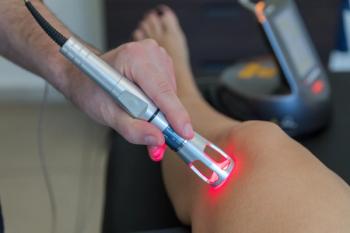
- Dermatology Times, December 2022 (Vol. 43. No. 12)
- Volume 43
- Issue 12
Exploring Mundane and Rare Pigmentary Disorders
At the 2022 SDPA Conference, Ted Rosen, MD, discusses skin conditions that could often be mistaken for vitiligo.
At the 2022 Society of Dermatology Physician Assistants Conference in Miami, Florida, Ted Rosen, MD, professor and vice-chair of dermatology at the Baylor College of Medicine in Houston, Texas, conducted a session on pigmentary disorders that may mimic vitiligo in appearance.
Vitiligo is an auto-immune disease that causes patches of the skin to lose their natural color. White or lightened patches form when the body destroys melanocytes. Rosen highlighted several other conditions that can cause discoloration in the epidermis.1
Tinea versicolor: This is a common fungal infection of the skin. The fungus interferes with the normal pigmentation of the skin, resulting in small, discolored patches. These patches may be lighter or darker in color than the surrounding skin and most commonly affect the trunk and shoulders. Factors that may predispose to tinea versicolor include heat and humidity and immunosuppression due to corticosteroids, pregnancy, undernutrition, diabetes, or other disorders Common treatments include the antifungal medication, ketoconazole (only in topical form; the US Food and Drug Administration has issued 2 warnings about the oral tablets. Use of the medication carries the risk of serious liver damage and harmful interactions with other drugs).
Idiopathic guttate hypomelanosis: This is a form of leukoderma that presents as small flat pale or white spots on the sun-exposed limbs. It becomes more common with age, affecting <50% in the fourth decade (31–40 years), 50–80% of people over 40 years of age, and >90% in the ninth decade (81–90 years). It has been reported uncommonly in children and teens. The aetiopathogenesis of idiopathic guttate hypomelanosis is likely multifactorial:
- Skin Aging
- Chronic sun exposure
- Genetic factors
- Trauma; other autoimmune factors
Arsenic poisoning: arsenic is a toxic metal; global contamination has increased significantly in the past decade. Repeated exposure can cause dermatological manifestations, including pigmentary changes. Rosen said arsenic is prevalent in well water, and he sees this condition more commonly in patients from Taiwan, Vietnam, Thailand, Bangladesh, Mongolia, rural Mexico, and the Western United States. Arsenic toxicity causes dermatological changes, including hyperpigmentation and solar keratosis. There is no specific treatment for chronic arsenic poisoning.
Rosen concluded his session by urging clinicians to examine all pigmentary changes in patients because they are not always dangerous but could be a sign of more serious underlying conditions.
Reference
Rosen T. It’s not always vitiligo. Presented at the 2022 Society of Dermatology Physician Assistants Conference; November 17-20, 2022; Miami, Florida.
Articles in this issue
almost 3 years ago
Cost-Effectiveness of Treating Advanced Melanomaalmost 3 years ago
Q&A: Muneeb Shah, DO, Discusses What it Means to Have Healthy Skinalmost 3 years ago
2022 Top Trends and What’s Next in Dermatologyalmost 3 years ago
Pulsed Dye Lasers for Cosmetic Proceduresalmost 3 years ago
Top Meeting Takeaways From the Fall Clinical Conferencealmost 3 years ago
Was It Marketing or Was It Misrepresentation?almost 3 years ago
Treatment of Plaque Psoriasis in Childrenalmost 3 years ago
A Conversation About JAK Inhibitors in Atopic Dermatitisabout 3 years ago
Holistic Treatment for the Management of Atopic DermatitisNewsletter
Like what you’re reading? Subscribe to Dermatology Times for weekly updates on therapies, innovations, and real-world practice tips.
















